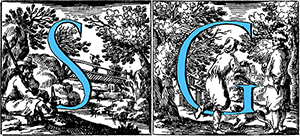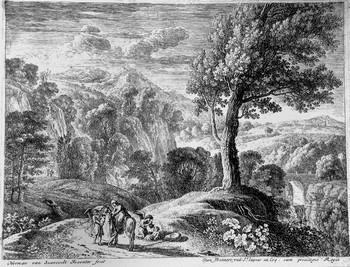
Van SWANEVELT Hermann
‘il foresta’ (Woerden c.1605 – Paris 1655)
Dutch painter and engraver, born in a family of artisans perhaps descendant of Lucas Van Leyden.
There is no certain information about his apprenticeship.
Still very young, he left Holland to move to Paris where he painted his first works.
From 1628 to 1641 he lived in Rome where he became a friend and follower of Claude Lorrain.
He has become a leading figure among those Nordic painters who have treated the atmosphere of the cities and landscape of southern Italy.
The Italianate landscape became a classic genre around 1630, with the rise of Swanevelt and his friends and contemporaries Pieter Van Laer and Claude Lorrain. During this period, on the basis of the great success obtained by his clear, gentle and lush landscapes and views of ancient ruins, Swanevelt worked for Roman patrons and aristocrats.
For the great new palace of the Buen Retiro erected in Madrid by Philip IV, King of Spain, he painted over 50 canvases in which also collaborated Claude Lorrain, Nicolas Poussin, Gaspard Dughet and Jan Both.
He moved to Paris in 1641 and his paintings and engravings contributed to popularize the classical landscapes in Northern Europe and were so successful that he became a habitual painter of King Louis XIV and a member of the Académie royale de peinture et de sculpture. In the field of engraving, he made over one hundred etching works with animal subjects, views of Rome and series of landscapes.
Herman Swanevelt did produce high quality etchings, which (as in the case of Rembrandt) increased his fame among both his contemporaries and his posterity.
His graphic works have helped to popularize the theme of the ‘ideal landscape’.
The international fame of this artist continued unaltered until the end of the 19th century, when suddenly it declined so much to be described as a simple pupil of the school of Claude Lorrain.




